
The movement of air masses plays a pivotal role in shaping the diverse and dynamic weather patterns experienced across different regions of the continents. These massive bodies of air, characterized by their temperature, humidity, and stability, interact with the Earth’s surface, influencing both local and regional climates. The impact of air mass movement is particularly evident in the manifestation of winds and the resultant weather conditions. This intricate interplay between atmospheric components creates a tapestry of climatic variations, showcasing the significance of understanding air mass dynamics. Through suitable examples, this exploration delves into the effects of air mass movements on weather and winds in distinct parts of the continents, illustrating the profound influence these atmospheric phenomena exert on our planet’s atmospheric systems.
Contents
Answer
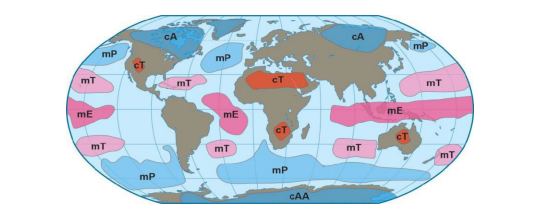
An air mass is a large body of air with generally uniform temperature and humidity. The area over which an air mass originates is what provides its characteristics. The longer the air mass stays over its source region, the more likely it will acquire the properties of the surface below.

The movement of air mass plays an important role in shaping weather patterns and winds in different parts of the continents.
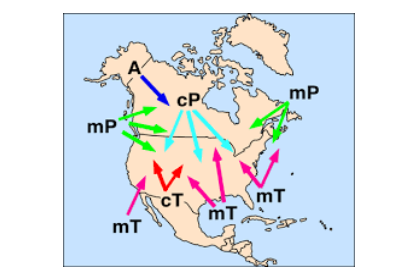
Impacts of movement of air masses on weather and winds in different parts of the continents
- In the united states, the collision between a maritime tropical air mass from Gulf of Mexico and a continental polar air mass from Canada can lead to the formation of severe
- weather, thunderstorms, tornadoes, and heavy rainfall. This occurs in the central part of the country known as ‘Tornado Ally’
- In south western USA particularly in summers, the arrival of dry tropical air mass from the desert region can result in extreme heatwaves and dry conditions. when they interact with maritime polar air mass from the Pacific ocean, it can result from monsoon-like thunderstorms, especially in Arizona and New Mexico.
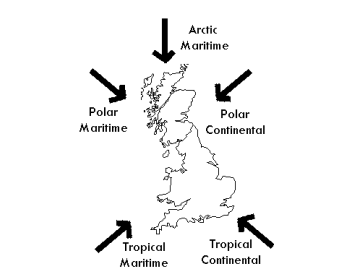

- Western Europe experiences the influence of maritime polar air masses from the North Atlantic ocean and maritime tropical air masses from the Azores high. Interactions can lead to frequent precipitation and variable weather conditions.
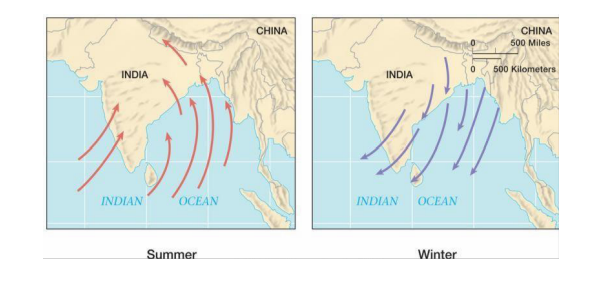
- The Indian subcontinent experiences the seasonal reversal of winds due to the movement of air masses. During the summers the continent is influenced by maritime tropical air masses from the Indian Ocean which brings heavy monsoon showers while during winter it is influenced by continental polar air mass from Eurasian landmass leading to dry and cool weather.
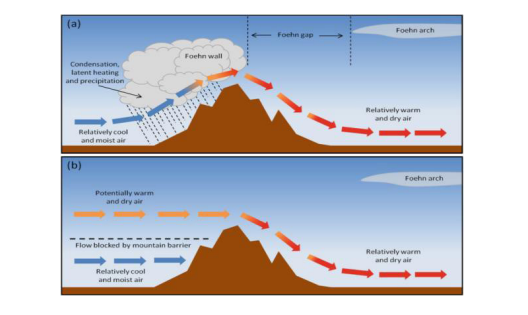
- The movement of air masses in the European Alps results in Foehn winds. When Moist maritime air mass from the Atlantic ocean encounters the mountains they are forced to rise. As the air ascends it cools and releases moisture as precipitation on the windward side. On the leeward side, the air descends, warming adiabatically leading to warm and dry conditions.
The movement and interactions of air masses are critical factors influencing weather and wind patterns in different parts of the continents. These interactions can lead to a wide variety of weather phenomena ranging from severe storms and heavy rainfall to dry and hot climatic conditions.
In case you still have your doubts, contact us on 9811333901.
For UPSC Prelims Resources, Click here
For Daily Updates and Study Material:
Join our Telegram Channel – Edukemy for IAS
- 1. Learn through Videos – here
- 2. Be Exam Ready by Practicing Daily MCQs – here
- 3. Daily Newsletter – Get all your Current Affairs Covered – here
- 4. Mains Answer Writing Practice – here

